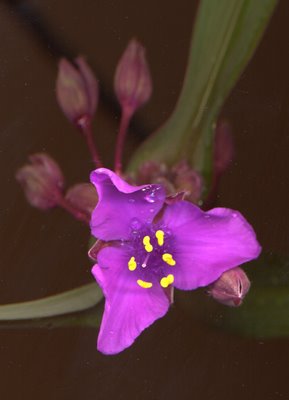Dr. Kevin Vaughn's Concord Grapes
Saturday, June 09, 2007

It was perhaps 6 or 7 years ago that I spotted a tall man with glasses at the Burrard door of the Vancouver Hotel. I went up to him and said, "How are you Dr. Vaughn? What are you doing in Vancouver?" He looked at me; thought about it and answered, "Hi, Alex I am here for botanical conference representing the US Department of Agriculture. My specialty is weeds."
In the late 70s and early 80s Kevin Vaughn was fascinated by hostas which are kind of the white mice of plants. Changes happen more quickly, they mutate with more frequency. Perhaps Vaughn saw in hostas a way of studying plants but in an accelerated way where more information could be obtained in less time. For his doctorate Vaughn wrote a treatise on the theory of how plants (and hostas in particular) variegate. He wrote these very important publications with K.G. Williams:
Chloroplast Mutants in Hosta
Genetics and Ultrastructure of a Dotted Leaf Pattern in Hosta.
An Ultrastructural Survey of Plastome Mutants of Hosta
From hosta Dr. Vaughn directed his research interest into Hemerocallis (daylillies).
Perhaps some 6 years ago I brought home some Tradescantia x andersoniana 'Concord Grape' for Rosemary. Tradescantias, named after John Tradescant, and English horticulturist and botanist have stems than when cut ooze a viscous secretion that hardens to form a silky web. This is why they are commonly called spiderworts.
Rosemary looked at my gift with doubt. Tradescantias remind me of the bird of prey space ships of Star Treck but Rosemary dislikes them because they flop over and look messy and the spent flowers (white in our garden)get rusty coloured.
Tradescantia x andersoniana 'Concord Grape' accurately named for the rich purple colour of their flowers surprised Rosemary by not flopping, blooming from late spring into fall and not only that, the spent blooms were tidy and beautiful.
Today I was surprised to discover that this plant is a Dr. Kevin Vaughn introduction. Some tradescantias are listed as weeds so perhaps in his research he decided to pass these on to us! Rosemary is grateful. And yet another plant in my garden has a human face behind it.






